- Mt. Bandai as a Stratovolcano
Mt. Bandai is a volcano formed from andesitic magma, which is common in the Pacific Ring of Fire. This type of magma has moderate viscosity, allowing it to flow as lava and erupt explosively, ejecting volcanic ash and other materials. Over time, these volcanic activities contribute to the formation of a beautiful stratovolcano.
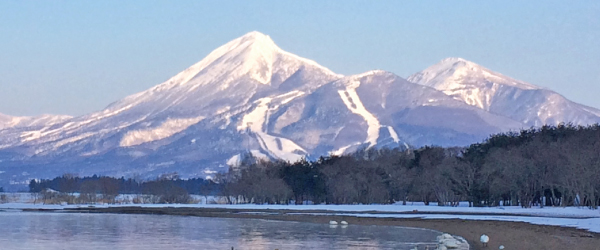
- Changes in the Stratovolcano Due to Mountain Collapses
Stratovolcanoes are gravitationally unstable and can undergo mountain collapses and rock avalanches triggered by eruptions or earthquakes. Mt. Bandai has experienced at least two major mountain collapses and rock avalanches—approximately 50,000 years ago and in 1888—that created flow-mound landscapes and significantly impacted the surrounding area. These formations are now major highlights of the Bandai-san Geopark.
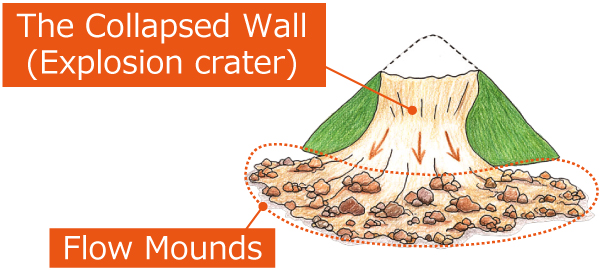
- Two Mountain Collapses and the Formation of Lakes and Ponds
The Mountain Collapse of Approximately 50,000 Years Ago
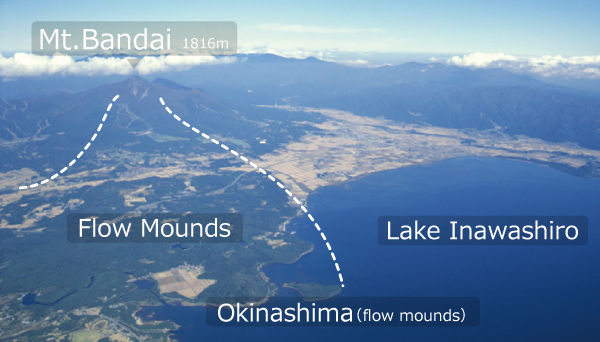
The first major collapse occurred on the Omote Bandai side, with a rock avalanche flowing southwest and damming rivers to create Lake Inawashiro. The only island in Lake Inawashiro, Okina Island (Area I 59), is believed to be one of the flow mounds formed at that time. Subsequently, a new volcano emerged and grew within the caldera formed by the collapse, eventually becoming the current Great Bandai (Mt. Bandai), which is admired for its elegant appearance and is often called “Aizu Fuji.”
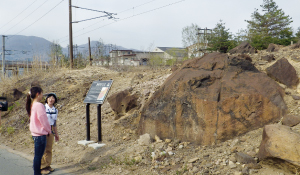
A large block of andesitic rock deposited by the avalanche can still be seen near Bandai Town Station, about 8 km southwest of Mt. Bandai. Because of its distance from the volcano, it was once speculated that a separate volcano, known as the Daiji Volcano (Daiji being the name of a local area), might have existed.
The Mountain Collapse of 1888 (Meiji 21)
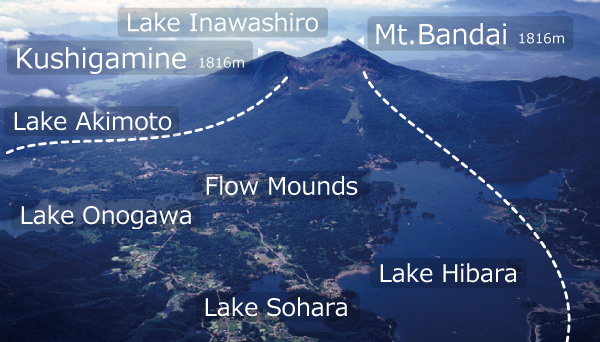
The 1888 collapse occurred on the Urabandai side, triggered by a phreatic explosion that destroyed and obliterated Little Bandai. The resulting rock avalanche claimed 477 lives, formed flow-mound landscapes, and dammed rivers to create numerous lakes and ponds, including Lake Hibara. While the land was left in a devastated state, the absence of lava flows allowed vegetation to recover relatively quickly. Efforts in reforestation eventually transformed the area into a scenic tourist destination.
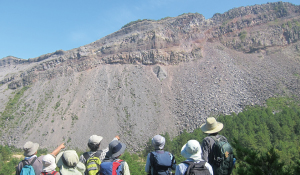
(Explosion crater)
The mountain collapse exposed the cross-section of Mt. Bandai, clearly revealing the internal layers of the stratovolcano. This rare geological feature, typically hidden in stratovolcanoes, makes Mt. Bandai an internationally significant geosite.
